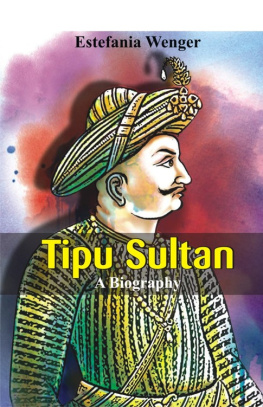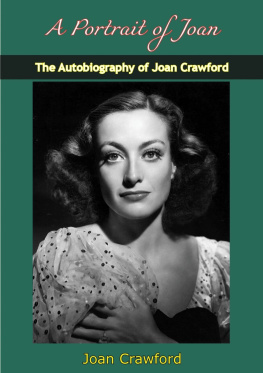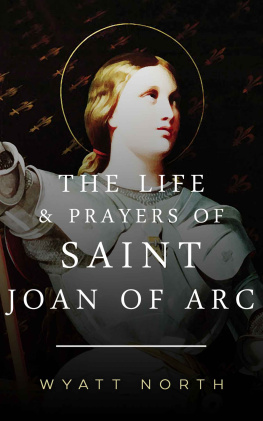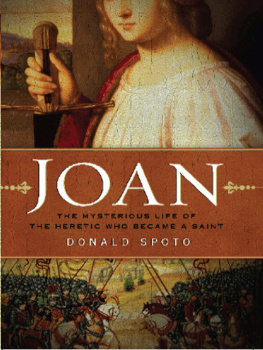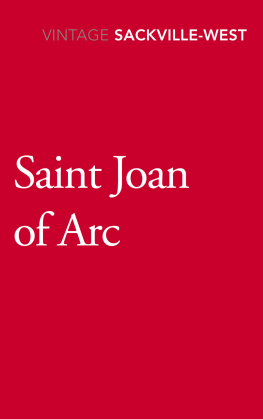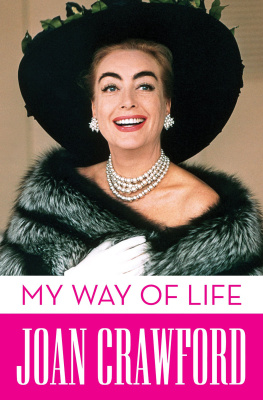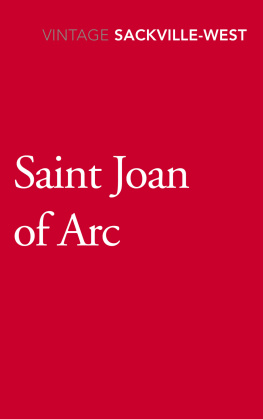Joan of Arc
A Biography
Estefania Wenger
Alpha Editions
Copyright 2017
ISBN : 9789386367266
Design and Setting By
Alpha Editions
email - alphaedis@gmail.com
All rights reserved. No part of this publication may be reproduced, distributed, or transmitted in any form or by means, including photocopying, recording, or other electronic or mechanical methods, without the prior written permission of the publisher.
The views and characters expressed in the book are of the author and his/her imagination and do not represent the views of the Publisher.
Contents
Introduction
Background
Early Life
Siege of Orlans
Military campaigns & Capture
Trial of Joan of Arc
Events after Death
Canonization of Joan of Arc
Legacy
References
Introduction
Joan of Arc, nicknamed "The Maid of Orlans" is considered a heroine of France for her role during the Lancastrian phase of the Hundred Years' War, and was canonized as a Roman Catholic saint. Joan of Arc was born to Jacques d'Arc and Isabelle Rome, a peasant family, at Domrmy in north-east France. Joan said she received visions of the Archangel Michael, Saint Margaret, and Saint Catherine of Alexandria instructing her to support Charles VII and recover France from English domination late in the Hundred Years' War. The uncrowned King Charles VII sent Joan to the siege of Orlans as part of a relief mission. She gained prominence after the siege was lifted only nine days later. Several additional swift victories led to Charles VII's coronation at Reims. This long-awaited event boosted French morale and paved the way for the final French victory.
On 23 May 1430, she was captured at Compigne by the Burgundian faction, which was allied with the English. She was later handed over to the English and put on trial by the pro-English Bishop of Beauvais Pierre Cauchon on a variety of charges. After Cauchon declared her guilty she was burned at the stake on 30 May 1431, dying at about nineteen years of age.
In 1456, an inquisitorial court authorized by Pope Callixtus III examined the trial, debunked the charges against her, pronounced her innocent, and declared her a martyr. In the 16th century she became a symbol of the Catholic League, and in 1803 she was declared a national symbol of France by the decision of Napoleon Bonaparte. She was beatified in 1909 and canonized in 1920. Joan of Arc is one of the nine secondary patron saints of France, along with St. Denis, St. Martin of Tours, St. Louis, St. Michael, St. Rmi, St. Petronilla, St. Radegund and Ste. Thrse of Lisieux.
Joan of Arc has remained a popular figure in literature, painting, sculpture, and other cultural works since the time of her death, and many famous writers, filmmakers and composers have created works about her. Cultural depictions of her have continued in films, theater, television, video games, music, and performances to this day.
Background
The Hundred Years' War had begun in 1337 as an inheritance dispute over the French throne, interspersed with occasional periods of relative peace. Nearly all the fighting had taken place in France, and the English army's use of chevauche tactics (destructive "scorched earth" raids) had devastated the economy. The French population had not recovered to its size previous to the Black Death of the mid-14th century, and its merchants were isolated from foreign markets. Prior to the appearance of Joan of Arc, the English had nearly achieved their goal of a dual monarchy under English control and the French army had not achieved any major victories for a generation. In the words of DeVries, "The kingdom of France was not even a shadow of its thirteenth-century prototype."
The French king at the time of Joan's birth, Charles VI, suffered from bouts of insanity and was often unable to rule. The king's brother Louis, Duke of Orlans, and the king's cousin John the Fearless, Duke of Burgundy, quarreled over the regency of France and the guardianship of the royal children. This dispute included accusations that Louis was having an extramarital affair with the queen, Isabeau of Bavaria, and allegations that John the Fearless kidnapped the royal children. The conflict climaxed with the assassination of the Duke of Orlans in 1407 on the orders of the Duke of Burgundy.
The young Charles of Orlans succeeded his father as duke and was placed in the custody of his father-in-law, the Count of Armagnac. Their faction became known as the "Armagnac" faction, and the opposing party led by the Duke of Burgundy was called the "Burgundian faction". Henry V of England took advantage of these internal divisions when he invaded the kingdom in 1415, winning a dramatic victory at Agincourt on 25 October and subsequently capturing many northern French towns. In 1418 Paris was taken by the Burgundians, who massacred the Count of Armagnac and about 2,500 of his followers. The future French king, Charles VII, assumed the title of Dauphinthe heir to the throneat the age of fourteen, after all four of his older brothers had died in succession. His first significant official act was to conclude a peace treaty with the Duke of Burgundy in 1419. This ended in disaster when Armagnac partisans assassinated John the Fearless during a meeting under Charles's guarantee of protection. The new duke of Burgundy, Philip the Good, blamed Charles for the murder and entered into an alliance with the English. The allied forces conquered large sections of France.
In 1420 the queen of France, Isabeau of Bavaria, signed the Treaty of Troyes, which granted the succession of the French throne to Henry V and his heirs instead of her son Charles. This agreement revived suspicions that the Dauphin may have been the illegitimate product of Isabeau's rumored affair with the late duke of Orlans rather than the son of King Charles VI. Henry V and Charles VI died within two months of each other in 1422, leaving an infant, Henry VI of England, the nominal monarch of both kingdoms. Henry V's brother, John of Lancaster, 1st Duke of Bedford, acted as regent.
By the time Joan of Arc began to influence events in 1429, nearly all of northern France and some parts of the southwest were under Anglo-Burgundian control. The English controlled Paris and Rouen while the Burgundian faction controlled Reims, which had served as the traditional coronation site for French kings since 816. This was an important consideration since neither claimant to the throne of France had been officially crowned yet. In 1428 the English had begun the siege of Orlans, one of the few remaining cities still loyal to Charles VII and an important objective since it held a strategic position along the Loire River, which made it the last obstacle to an assault on the remainder of the French heartland. In the words of one modern historian, "On the fate of Orlans hung that of the entire kingdom." No one was optimistic that the city could long withstand the siege. For generations, there had been prophecies in France which promised France would be saved by a virgin from the "borders of Lorraine" "who would work miracles" and "that France will be lost by a woman and shall thereafter be restored by a virgin". The second prophecy predicating France would be "lost" by a woman was taken to refer to Isabeau's role in signing the Treaty of Troyes.
Early Life
Joan was the daughter of Jacques d'Arc and Isabelle Rome in Domrmy, a village which was then in the French part of the duchy of Bar. Joan's parents owned about 50 acres (20 hectares) of land and her father supplemented his farming work with a minor position as a village official, collecting taxes and heading the local watch. They lived in an isolated patch of eastern France that remained loyal to the French crown despite being surrounded by pro-Burgundian lands. Several local raids occurred during her childhood and on one occasion her village was burned. Joan was illiterate and it is believed that her letters were dictated by her to scribes and she signed her letters with the help of others.


